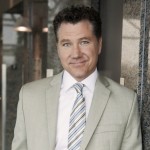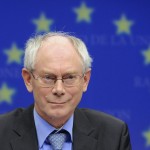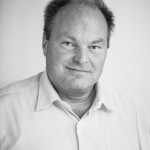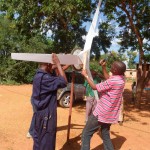 Continuing with the series of “wind energy stories” from around the world, in association with Global Wind Day, Chris Rose from Vancouver speaks with fellow Canadian Chris Forrest.
Continuing with the series of “wind energy stories” from around the world, in association with Global Wind Day, Chris Rose from Vancouver speaks with fellow Canadian Chris Forrest.
As a student in Ottawa, Chris Forrest admits he was a bit of a “class clown” interested in writing, music and other creative pursuits. Maths and science did not engage him at all. As a young man, Forrest drifted into newspaper journalism and later the murky but thrilling world of writing crime novels.
Now, at 41, he appreciates the effort, the stamina and the discipline required to reach and hold an audience. And well he should considering he is Vice-President of Communications and Public Affairs with the Canadian Wind Energy Association (CanWEA).
“Communications is at the very core and heart of what we are doing,” said Forrest, who has been involved with the Canadian wind energy industry since 2008.

Herman van Rompuy, President of the European Council
The issue of energy may have been overshadowed by that of tax at yesterday’s EU summit of Heads of State in Brussels, but its growing importance and impact on Europe’s economy is one that cannot be ignored.
As the Financial Times reported on Tuesday, Europeans are paying a lot for their energy – prices are 37% higher than those in the US and 20% higher than those in Japan. Why? Largely because we import an incredibly high share of expensive fossil fuels.
What’s worse is that this dependence – and hence impact on prices – is growing. Herman van Rompuy, President of the European Council, has said that by 2035 over 80% of our energy will be imported, posing a threat to Europe’s competitiveness and endangering its economy.

Thomas Becker, EWEA CEO.
“Gas, coal and nuclear have more political clout than the wind industry”, and the industry has to take a “more visible place in the political landscape.”
So writes EWEA’s new CEO Thomas Becker in the latest Wind Directions.
“The big boys did not see nice ‘alternative’ wind as a threat. Now they do. As old power plants face closure the competition between technologies to fill the gap is intense.
Becker calls for European and national associations to “speak with one voice.”
“Gone are the days when economic growth made expansion easy for all technologies. The associations of the wind industry need to big up – like turbines have. Like the grid we need to be better interconnected: European and national associations must work together much more closely to shape national government and EU energy policy.”
Read the full article in the latest Wind Directions
 By Fran Witt, Renewable World
By Fran Witt, Renewable World
One kilowatt may not seem like a lot – some heaters in the West use this much energy every hour. But in Songambele, Tanzania, comparatively little energy is going a long way.
Renewable World, the UK based charity who work to provide renewable energy to remote communities in the developing world, is helping the off-grid community of Songambele to power itself out of poverty.
Climate change has impacted its 21,000 inhabitants, with crops becoming increasingly difficult to grow, resulting in adults and children working longer hours for smaller wages. Today, power provided by a new wind turbine is being used to improve crop yields directly by pumping water for irrigation. This enables children to spend more time at school and provides both time and opportunities for adults to expand their skill-sets.
Together with Tanzanian partners ALIN, and local wind power firm Wind Power Serengeti, Renewable World has established a wind/solar hybrid system which powers a Maarifa (information technology) Centre. In addition to solar panels, a 1kw wind turbine has been installed to power the Centre, to provide additional power for productive uses, such as access to modern information technology services. The 12 metre tall horizontal axis turbine is locally produced and is designed to cut in at low wind speeds. It produces an average of 3kwH of energy per day.

French Environment Minister Delphine Batho
Writing in France’s prestigious centre-left daily newspaper Le Monde, Peter Altmaier, the German environment minister, and Delphine Batho, his French counterpart, underlined the need for a 2030 renewable energy target and highlighed the importance of renewables in transforming the European economy, improving energy security and reducing greenhouse gas emissions.
“We want to make the energy transition [moving to produce a significant amount of electricity from renewables] the new motor of the Franco-German couple,” stated the letter. It noted that the two countries recently decided to create a joint renewable energy office that will focus on promoting cooperation between companies, and on encouraging political and scientific collaboration on renewables.
France is aiming to reduce the share of nuclear in its electricity production from 75% to 50% by 2025, to increase the country’s energy efficiency by around 20%, and by 2020 to produce around 23% of electricity from renewables, according to Ms Batho. Germany, meanwhile, wants by 2022 to no longer produce any energy from nuclear power and by 2030 to produce at least 50% of its electricity from renewables.
 Continuing with the series of “wind energy stories” from around the world, in association with Global Wind Day, Chris Rose from Vancouver speaks with fellow Canadian Chris Forrest.
Continuing with the series of “wind energy stories” from around the world, in association with Global Wind Day, Chris Rose from Vancouver speaks with fellow Canadian Chris Forrest.






 Comments
Comments



